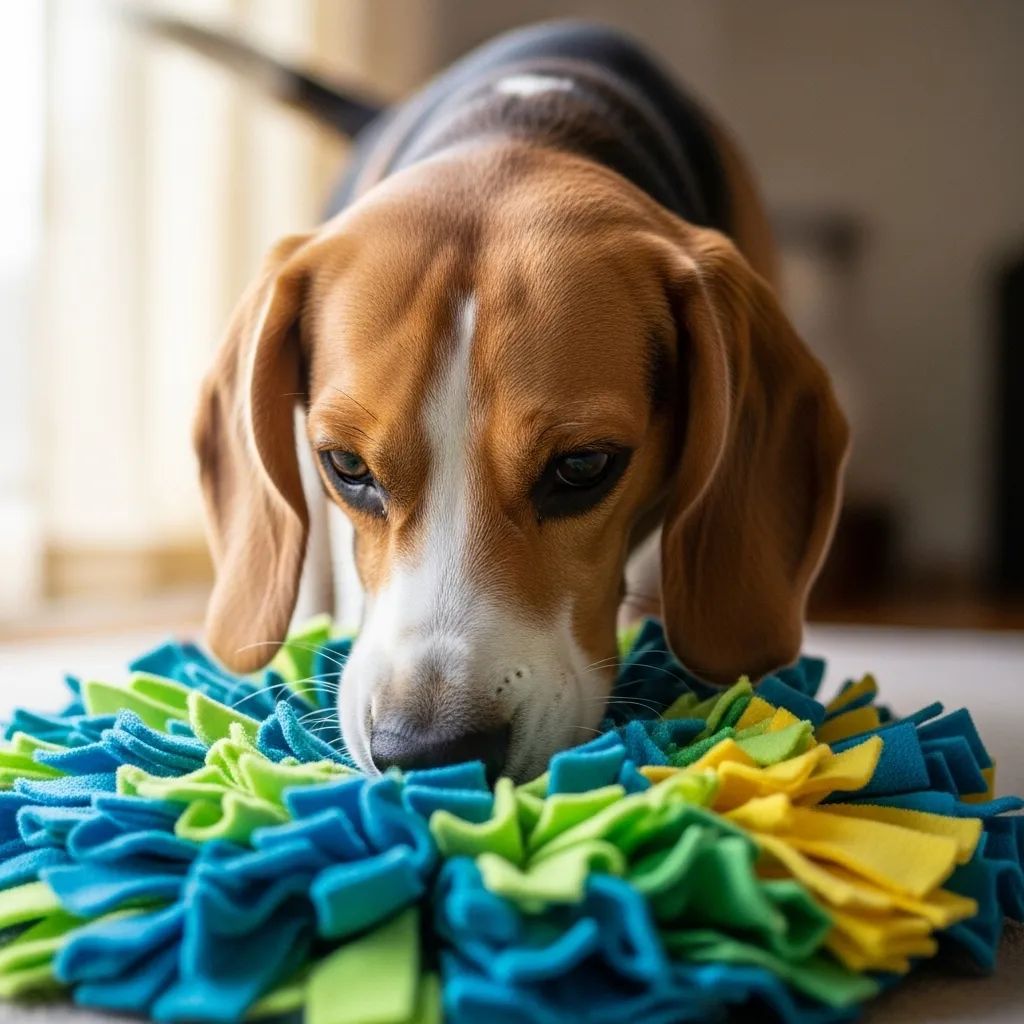
Midday Management: Enrichment and Independence Building
For those who are retired, work from home, or are simply spending the day in, the challenge isn’t about leaving—it’s about getting things done with a dog who wants to be a part of every single activity. Whether you’re trying to answer emails, do laundry, or cook a meal, your Velcro dog will likely be underfoot. This is where management and mental stimulation become your best friends.
The core concept to embrace is enrichment. Enrichment refers to activities that stimulate your dog’s mind and allow them to engage in natural behaviors like sniffing, chewing, and problem-solving. A mentally tired dog is a happy and calm dog. Providing structured enrichment helps build their confidence and teaches them that they can be happy and engaged even when they aren’t receiving your direct attention.
Here are some simple yet powerful enrichment ideas for your Velcro dog:
Food Puzzles: Instead of feeding your dog from a bowl, use a puzzle feeder. These toys require your dog to roll, nudge, or slide pieces to get to their kibble. This turns a two-minute meal into a 15-minute brain game.
Snuffle Mats: These are mats made of fleece strips where you can hide dry food or treats. They encourage your dog to use their powerful sense of smell to forage for their food, which is an incredibly satisfying activity for them.
Licking Mats: Spread a bit of dog-safe yogurt or pumpkin puree on a textured silicone mat. Licking is a self-soothing behavior for dogs, and this can keep them calmly occupied for a good while.
A Note on Safety: Always supervise your dog when introducing a new toy to make sure they use it properly and don’t try to chew off and swallow any pieces. Reputable pet organizations like the ASPCA offer guidance on toy safety.
Teaching Calm Independence: The “Settle” Cue
One of the most valuable skills you can teach a Velcro dog is to settle calmly on their own mat or bed. This doesn’t sever your bond; it gives them a “job” to do and a designated place to relax that is near you but not on top of you. This is taught using positive reinforcement, which means rewarding the behavior you want to see, making your dog more likely to offer it in the future.
Mini-Example: A 5-Minute “Settle” Training Session
1. Set the Scene: Choose a comfortable dog bed or mat. Place it a few feet away from where you are sitting (e.g., next to your desk). Have a handful of small, tasty treats ready.
2. Lure and Reward: Toss a treat onto the mat. When your dog steps onto the mat to get the treat, say “Yes!” in a happy voice and give them another treat while they are still on the mat. Let them leave the mat if they want.
3. Build Duration: Repeat this several times. Once your dog starts to understand that good things happen on the mat, wait for them to lie down. The moment they do, say “Yes!” and deliver a few treats in a row, right between their paws. This encourages them to stay in the down position.
4. Add the Cue: Once your dog is reliably going to the mat and lying down, you can add the verbal cue. As they are moving toward the mat, say “Go Settle” in a calm voice. Continue to reward them for staying there.
5. Keep it Short and Fun: Keep sessions to just a few minutes, once or twice a day. The goal is to make the mat the best place in the world to be. Over time, you’ll find your dog choosing to go to their mat on their own, giving you the space you need and giving them a sense of calm independence.














